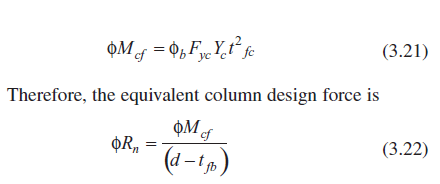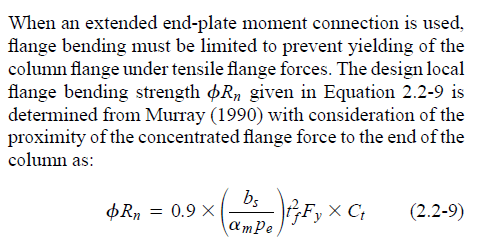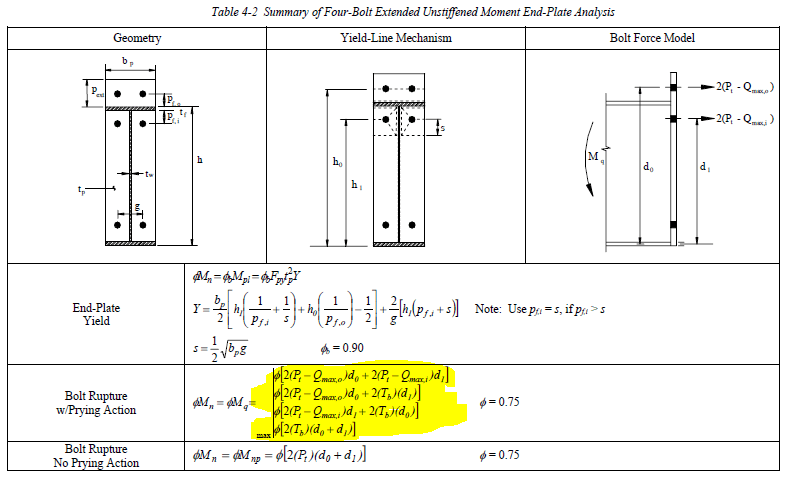AISC GD 4 is based on yielding line calculations of the column and beam flanges which is understandable. However, AISC DG 13 recommends to prevent yielding of column flanges under tensile flange forces which can not be found in the DG 4. Why is that and which design guide must be referenced for calculation of column capacity at extended end plate connection?
DG 4

DG 13

DG 4

DG 13




